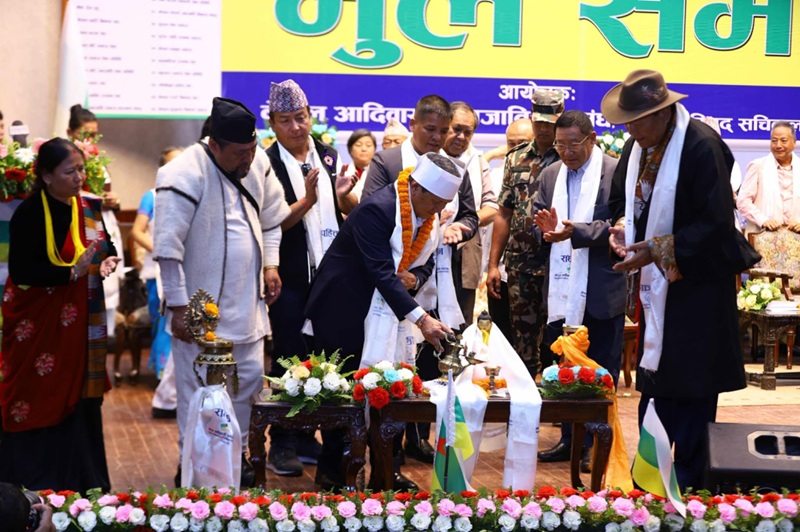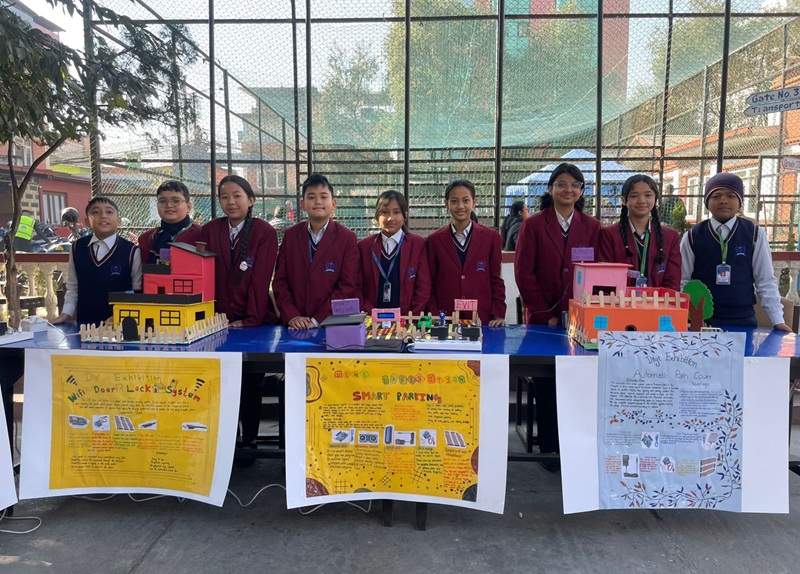AI Use Will Shape Indigenous Future, Says Minister Gurung on World Indigenous Day
10th August 2025, Kathmandu
As the global discourse on Artificial Intelligence (AI) intensifies, Nepal’s Minister for Communication and Information Technology, Prithvi Subba Gurung, has underscored its pivotal role in shaping the future of indigenous communities.
AI use indigenous future
Speaking at the 31st International Day of the World’s Indigenous Peoples celebration in Kathmandu, Minister Gurung urged Nepalese indigenous communities to embrace technological advancements, emphasizing that engaging future generations in AI studies and research is crucial for adaptation and empowerment.
The event, organized by the Nepal Federation of Indigenous Nationalities (#NEFIN), highlighted the complex relationship between technological progress and the preservation of indigenous identities, cultures, and rights.
AI: Opportunity and Challenge for Indigenous Peoples
Minister Gurung emphasized the need for indigenous communities to adapt to rapidly changing technological developments. He stated that while AI presents an opportunity for advancement, improper use could lead to increased challenges. Globally, AI’s impact on indigenous communities is a double-edged sword.
It offers potential for cultural revitalization, language preservation (e.g., through digital tools for endangered languages), and ecological protection by modeling climate patterns affecting ancestral lands.
However, without the active participation of indigenous communities in AI development and governance, there’s a significant risk of perpetuating historical patterns of cultural erasure, misrepresentation, and data exploitation. Many existing AI systems, trained on datasets that often exclude indigenous knowledge, can reinforce biases and marginalization.
Achievements and Pending Rights in Nepal
Minister Gurung acknowledged significant strides in indigenous rights in Nepal compared to other countries, particularly with the promulgation of the Constitution of the Federal Democratic Republic of Nepal on October 19, 2015 (Ashoj 3, 2072 BS). A key achievement was the recognition of indigenous mother tongues as national languages, enabling their use as official languages at the local government level.
Despite these gains, many rights remain unsecured. Minister Gurung noted the insufficiency of public holidays granted for indigenous festivals, emphasizing that local and provincial governments now have autonomy to formulate policies, programs, budgets, and laws, which is a step towards self-governance.
He stressed that the essence of indigenous identity lies in language, traditions, culture, attire, and customary laws, urging communities to preserve these elements and teach their children their languages at home.
The establishment of the Indigenous Nationalities Commission, proportional representation based on ethnicity, and Nepal’s recognition as a secular state are notable achievements. However, demands for a separate ministry and university for indigenous peoples are yet to be fully met.
Land Loss and Displacement: A Growing Concern
A pressing issue highlighted by NEFIN President Gelje Lama Sherpa is the displacement of indigenous communities due to large development projects. Sherpa voiced concerns that “Our communities have been forced to leave yak grazing areas and sheep pastures. Under the pretext of protected areas and national parks, the state has seized indigenous lands.”
This aligns with broader concerns in Nepal where development projects, such as hydropower, often proceed without adequate consultation or Free, Prior and Informed Consent (#FPIC) from affected indigenous populations, leading to conflicts and loss of livelihoods.
According to a 2021 Census of Nepal by the Central Bureau of Statistics, indigenous peoples constitute 35.08% of the total population of 29,164,578. However, indigenous academics and movement leaders suggest they represent a majority. Despite constitutional assurances of inclusion and proportional representation, indigenous peoples remain underrepresented in state structures. For instance, Khas-Arya judges constitute 82.35% of the Supreme Court, with Nepalese Newars holding only two seats.
Land grabbing, criminalization of customary practices, and involuntary displacement are systemic issues. Protected areas, including 12 National Parks, 1 Wildlife Reserve, 1 Hunting Reserve, 6 Conservation Areas, and 13 Buffer Zones, cover 23.39% of Nepal’s land, often impacting indigenous communities who have historically managed these lands.
Cases like the Pathibhara Cable Car Project and the Tamakoshi-Sunkoshi corridor hydropower project illustrate how development can infringe upon sacred sites and ancestral lands without proper consent, leading to protests and militarization. Indigenous women, in particular, face intersecting forms of discrimination and are disproportionately affected by issues like trafficking, making up 70% of victims rescued by NGOs.
Celebrating International Day of the World’s Indigenous Peoples
The International Day of the World’s Indigenous Peoples is observed globally on August 9th, commemorating the first meeting of the UN Working Group on Indigenous Populations in Geneva in 1982. This year’s theme in Nepal was: “Ensure the rights of indigenous peoples over natural resources, water, land, and forests; Implement the Supreme Court’s directive orders related to UNDRIP and ILO Convention 169.”
The theme specifically addresses the critical need to uphold the rights enshrined in the United Nations Declaration on the Rights of Indigenous Peoples (UNDRIP) and the International Labour Organization (ILO) Convention No. 169.
A recent landmark decision by the Supreme Court of Nepal on June 6, 2025, mandated all levels of government to create laws, policies, and programs aligned with ILO Convention No. 169 and UNDRIP, explicitly upholding the right to Free, Prior and Informed Consent (FPIC).
This is a crucial step for Nepal, which ratified ILO Convention No. 169 in 2007 (the first in South Asia) and voted in favor of UNDRIP, but has often failed to implement these international commitments domestically.
The celebration in Kathmandu saw the participation of various political figures and indigenous leaders, emphasizing the ongoing struggle for unity in securing indigenous rights. Chairman Nima Lama of Chumnubri Rural Municipality and the Lawyers’ Association for Human Rights of Nepalese Indigenous Peoples (LAHURNIP) were honored for their contributions.
The event concluded with a vibrant cultural rally, showcasing the rich traditions and diversity of Nepalese indigenous communities.
For more: AI use indigenous future







